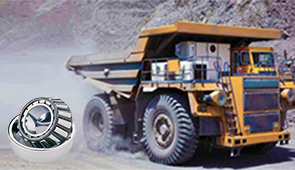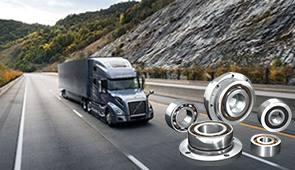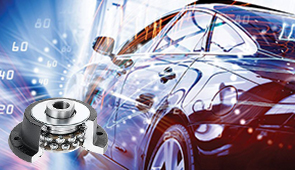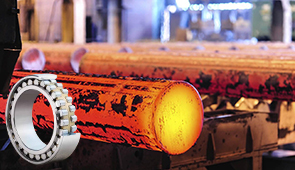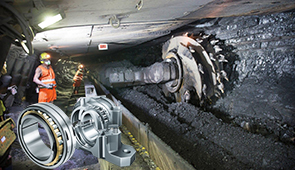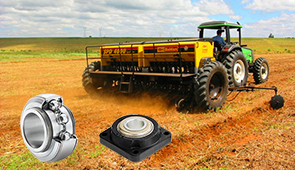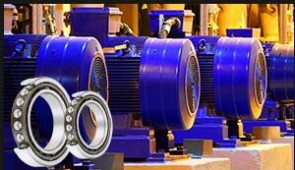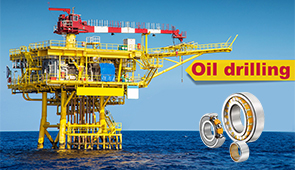Understanding ABEC-7 Bearings: Precision, Performance, and Applications
When it comes to achieving optimal performance in high-speed machinery, skateboards, or precision mechanical equipment, the choice of bearings plays a critical role. Among the most sought-after options are ABEC-7 bearings, renowned for their exceptional precision, durability, and ability to minimize friction. But what exactly sets ABEC-7 bearings apart? Why are they favored for applications that demand peak efficiency and reliability? This article dives deep into the world of ABEC-7 bearings, exploring their technical specifications, performance capabilities, and diverse applications. Whether you’re an engineer seeking the right component for a project or an enthusiast looking to boost your equipment’s performance, understanding ABEC-7 bearings is key to making informed and effective decisions.
What are ABEC-7 Bearings?
Definition of ABEC-7 Bearings
A set of ABEC-7 bearings is a set of highly precise ball bearings made in accordance with the ABEC scale for bearing tolerance and performance of rotating elements. According to the rating, with extremely tight tolerances, which will ensure the least runout possible, these bearings give the best efficiency in high-speed, precision applications. Accuracy is highly stressed in their construction, as are smoothness and vibration.
ABEC-7 bearings are manufactured with the most exacting standards, able to withstand the rigors of aerospace, robotic, and manufacturing fields. They are most suitable for application in which vibrationless rotation and proper alignment are critical considerations. Due to their excellent properties, they give greater durability, wear, and life as compared to lower-grade bearings.
Though ABEC rating considers the dimensional and tolerances of bearing systems, it does not consider other involved in the overall functioning of ABEC-7 bearings such as the quality of the materials, lubrication, and operating conditions. In proper working and maintenance of these bearings, they can outperform all others, hence are set as a priority in leading-edge technical and industrial settings.
How ABEC Ratings are Determined
ABEC ratings are given depending on strict measurements of how tolerant bearing parts, namely the inner and outer rings, balls, and races are, and their dimensional accuracies. The things tested include features such as allowable deviation in diameter, roundness, or surface finish so that a high level of uniformity and smooth run can be obtained. Testing procedures are applied to each bearing that goes through standardized testing conditions so that the ratings will comply with the criteria of the Annular Bearing Engineers’ Committee (ABEC).
A number rating classifies bearings into five main categories: 1, 3, 5, 7, and 9, with confinement to tighter tolerances as the numbers increase and with greater precision levels. These tolerances are generally stated in microns to emphasize the stringent nature of the tolerance by which a bearing is evaluated relative to. For instance, the dimensional deviations encountered in an ABEC-9 rating of a bearing are far less than those of an ABEC-1 rating, thus making these for applications that have to be extremely precise with the least margin of error.
It is important to realize that the ABEC rating system only looks at the geometric accuracy of a bearing. Factors such as quality of material, efficaciousness of lubrication, and ability to resist contamination are not evaluated in the ABEC system. Mostly, manufacturers complement the ABEC system with further specifications for these features so as to suit the bearing for determined operational uses. Therefore, ABEC remains a good steeping stone toward bearing precision, but a bearing must in consideration along every facet of performance in order to gain suitable choice.
Key Features of ABEC-7 Bearings
- Higher Precision: ABEC-7 bearings were designed for that extra edge in rotational accuracy. Executed to tighter tolerances than the lower grades, they minimize deviations and guarantee uniform functionality. Therefore, to put them into spheres where exceptionally smooth and reliable motion is required-aerospace equipment, high-speed machinery, and specialized medical devices-friendly applications are the best examples.
- Reduced Vibration and Noise: It can work almost silently and vibrate very little. This is the result of careful manufacturing processes that guarantee an even weight distribution and optimal geometry. In some areas, such as noise reduction or vibration control, this feature is mandatory.
- Longer Life Utility: ABEC-7 bearings stand for high levels of treatment, waterproofness, wear resistance to heavy loads, deformation, or speed. The bearings also come with excellent lubrication systems to help with smooth working and longer life span. These characteristics make such bearings highly suitable for demanding long-term applications.
In contrast, the ABEC-7 bearing combined this way is an excellent fit where high performance is required, precisely matching the degree of precision, efficiency, and fluidity. While prices are usually quite high, the metrics of performance can justify that investment where the scope is highly specialized.
Benefits of Using ABEC-7 Bearings
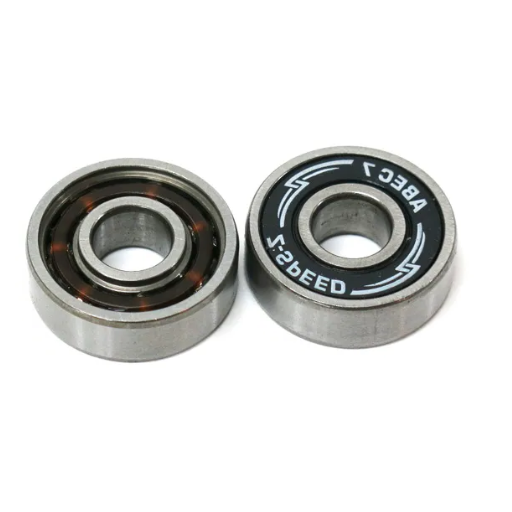
Superior Performance and Precision
ABEC-7 bearings are developed precisely to provide ultimate precision and superior performance, which are vital in applications with immense requirements such as aerospace systems, state-of-the-art medical equipment, and advanced manufacturing equipment. These bearings are very distinguished, having minimum tolerance levels which allow smooth operation with very little vibration, which in turn translates into the much-improved performance alongside the maintenance of output components with minimum wear-and-tear, thereby contributing to the life and reliability of the overall system.
The other most vital factors accounting for high performance in ABEC-7 are tight manufacturing standards mandating the use of superior quality materials and fabrication technologies. These bearings are held tightly within geometric tolerances to minimize imperfections that would otherwise compromise their functionality; for example, rolling elements might be fined in terms of sphericity, and races’ surfaces might be finished to receive uniform load distribution, which contributes to fluidity in operations. Lubricants designed for ABEC-7 specifications would, at least, help reduce friction, hence operations are further enhanced under differing temperature and environmental considerations.
From an analytical perspective, ABEC-7 bearings have been shown to enhance precision-based performance quantifiably in various industries; for example, large-scale machines using these bearings report lowered energy consumption resulting from resistance reduction, whereas precision medical imaging devices gain more fidelity and resolutions. The measurable advantages make ABEC-7 bearings a must-have component for applications where ultimate levels of control and accuracy are required to ensure both short-run functionality and long-run durability.
Durability and Longevity
The durability and longevity afforded by ABEC-7 ratings for the bearings come mainly from top-grade materials, precision engineering, and stringent quality checks in their manufacture. Constructed out of stainless steels or hybrid ceramics of superior grade, these bearings are equipped with an in-built guarantee against corrosion and wear and resist thermal decomposition to provide superb service under harsh operating conditions. Advanced heat treatments and surface finishes impart higher bearing capacity and resistance to deformation with time.
A series of tests have proved that ABEC-7 can bear high speed withstanding repeated cycles of stress and yet the performance remains virtually intact. Operational downtime during processes has been shown to lessen with the employment of these bearings in manufacturing equipment, owing to their precision in preventing misalignments and wear. Maintenance needs are lowered by tight tolerances that maintain lubrication, thus lessening the frequency of lubricant applications.
This unbeaten mix of excellent material and structural soundness wins its manufacturers a prime position in such demanding sectors as aerospace, automotive, and industrial manufacturing, which need operational equipment. Selecting ABEC-7 bearing means manufacturers have extended operational lifespan and lower total ownership cost, all within the confines of critical operational performance requirements.
Why Choose ABEC-7 Over Other Ratings?
ABEC-7-bearing precisions and performance remain unattainable by lower classes and are therefore optimal for highly demanding applications. Bearings in this class have tolerances so tightly fitted that they rotate with a scarcely perceptible amount of vibration and minute operating errors, all resulting directly in greater efficiency, lowered energy consumption, and more cases of durability when high-speed environments may only suffice for a moment in lesser-grade bearings.
It has been suggested that from an operational standpoint, while ABEC-3 or ABEC-5 bearings are adequate for general uses, the requirements of advanced machinery or high-speed applications would prove too much for them. Even in aerospace engineering, minuscule differences in the performance of a bearing will result in critical system inefficiency or, worse yet, failure. ABEC-7’s precision practically coseals these risks.
Another advantage is that ABEC-7 bearings use better materials and advanced lubricants that provide stability under extreme conditions. The reduced wear rates of these bearings, when tested for extended operation or practical conditions, such as fluctuating temperatures or high-impact loads, make it possible for machines to achieve long service intervals, hence few emergency repairs, which means steady and cost-effective operations.
Putting them into place over inferior ratings will ensure that an industry adheres to its highest level of performance accorded by rigorous operational standards and measurable long-term value. Such ratings make ABEC-7 a strategic choice on any application that requires precision in robotics, medical devices, heavy equipment, and so forth.
Applications of ABEC-7 Bearings
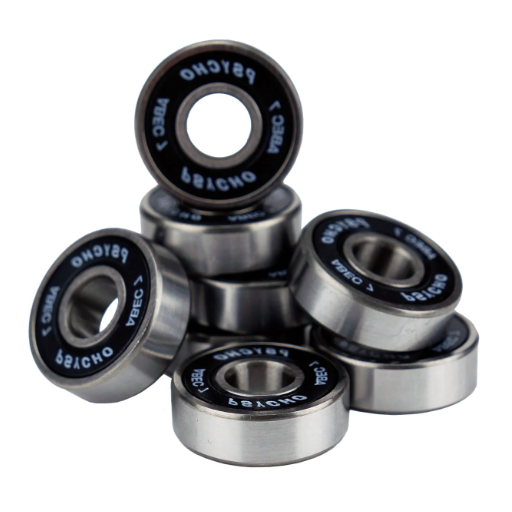
Use in Skateboarding and Rollerblading
The top-grade bearings are used in skateboarding and rollerblading for precision, low friction, and smoother and efficient movement. These bearings are made so as to avoid mechanical resistance and ensure that under extreme loads or even at very fast speeds, the wheels continue to rotate without any hold, which in turn is very important for performance-based athletes. The strict tolerances of ABEC-7 bearings enhance stability while performing tricks, jumps, or fast maneuvers, which undoubtedly affects how well the user can perform with this enhanced control.
Further to this, the ABEC-7 bearing materials can resist the high impact of repeated motion or exposure to dust, dirt, moisture, and so forth-so common in an outdoor skating environment. Their design, as verified by computational models and material testing, contributes to their durability against prolonged intensive use.
For those virtue of their setups valuing speed, precision, and reliability, using ABEC-7 bearings provides them with real opportunities, thereby greatly enhancing the current performance-oriented designs towards operational efficacy in long-term use.
Manufacturing and Industrial Applications
High-precision bearings like ABEC-7 span a long series of manufacturing and industrial applications. Their high accuracy and durability, along with smooth operation, enhance the overall performance of various industries. Below are five crucial applications wherein these bearings see major use:
- CNC Machining: ABEC-7 bearings would be among those bearings used in the spindle systems of CNC machining centres. Tolerances are so tight that very little run-out can be accepted so as to ensure the utmost precision with high-speed operations. For example, spindle speeds in CNC machines can exceed 10,000 RPM, thereby requiring bearings to hold their accuracy under these conditions.
- Robotics and Automation: Precision bearings allow for smooth and repeatable movement in industrial robots’ joints and actuators. ABEC-7 bearings are used in robotic arms where positional accuracy within microns is necessary, which is utterly essential in processing semiconductors or for fine assembly lines.
- Medical Equipment:MRI scanners, CT machines, and surgical robots rely on high-grade bearings for quiet and vibration-free movements. The low resistance and high reliability of ABEC-7 bearings assist with the level of precision needed for these life-critical technologies.
- Aerospace Components: These bearings are used in systems where oscillating parts operate under large loads. ABEC-7 bearings have extreme reliability and high opposition to stress at high speed; aircraft components include gyro scopes, flight control surfaces, and jet engines.
- High-Performance Motors: Bearings for electric motors used in industrial manufacturing, including conveyors and automated equipment, are needed to sustain very high speed and keep low energy loss. ABEC-7 bearings minimize friction so that the motors can operate with high efficiency in long operational cycles of over 20,000 hours of continuous use.
ABEC-7 bearings find application in instances where precision is a must, and so maintenance and performance of the bearing are indispensable.
Robotics and Automation
In high-performance applications, the integration of ABEC-7 bearings in the robotics and automation system stipulates precise positioning, maximum efficiency, and the highest degree of durability. ABEC-7 bearings are designed to support the high-speed, repetitive movements required by industrial robots, automated guided vehicles (AGVs), and precision assembly machines. Thanks to their high-grade material composition and very tight tolerances, ABEC-7 bearings are capable of reducing friction and heat buildup to a minimum, thus ensuring maximum energy efficiency and minimizing wear during longer operational cycles.
One advantage offered by ABEC-7 bearings to robotics is that they very much maintain accuracy and reliability in move-dynamic conditions as in pick-and-place or multi-axis coordinated operations. These systems equipped with ABEC-7 bearings can undergo repeatable motion profiles with micrometer-scale accuracy, which is required for applications such as semiconductor manufacturing and medical device manufacturing. The operation at high speeds with the assurance that their structural integrity is never compromised also allows these bearings to keep the throughput of the automated systems high while at the same time ensuring very infrequent occasions for maintenance.
Industry data confirm the fact that components having the high precision of ABEC-7 type bearings improve the Mean Time Between Failures (MTBF) of the robotic systems, thereby leading to saving in costs and an increase in the productivity of the systems. The bearings, with their reliability in performance in the robotic and automation fields, are the ones that reduce downtime, provide consistent quality of output, and hence add to the long-term utility of manufacturing environments, thus becoming indispensable in modern manufacturing scenarios.
Choosing the Right ABEC-7 Bearings
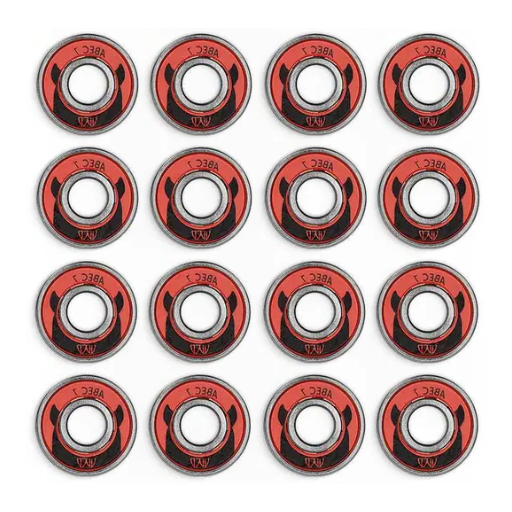
Critical Factors to Consider
When choosing ABEC-7 bearings for a robot and automated system, there are a few critical factors I concentrate on for best performance and long-term reliability. First are very precise dimensional tolerances and material compositions. ABEC-7 bearings have to be manufactured to very tight standards, and the choice of either good steel or ceramics will affect performance, friction, and wear resistance in a particularly hostile environment. Taking these factors into consideration helps me adapt the bearing specifications to the mechanical and thermal needs of my application.
Another very important factor is the load capacity and speed rating. Bearings can only handle so much radial and axial load, and a certain level of rotations per unit time; beyond that, they lose efficiency due to vibrations. For robots that require high precision and very fast cycles, maintaining stability under load with minimal vibration is critical. By knowing the load parameters for the intended application, I can ensure that the bearings selected will contribute to a longer equipment life and maintain consistently steady output quality.
Lastly, I consider lubrication methods and sealing unless I choose an already lubricated bearing with a seal. Lubrication is needed to minimize friction and prevent overheating and degradation of the material of which the bearing is made. The sealing design, be it contact seals or shields, protects the bearing against ingress of dust and moisture, which could almost surely deteriorate the bearing performance and life. Aligning these factors with the operating conditions of the system lets me rest assured that my bearing choice will yield fruitful performance and reliability in an advanced manufacturing setup.
Load Capacity and Speed Requirements
The operational load rating and speed rating are considerations that affect the suitability of bearings for an application. Load considerations are two: dynamic load capacity and static load capacity. Dynamic load capacity refers to the load at which a bearing can run at a defined speed for a defined time, usually one million revolutions, without resulting service failure. The static load capacity refers to any load applied to a bearing when it is stationary, mainly to avoid permanent deformation of the rolling elements due to excessive stress.
Speed requirements also have their own importance, determining the speed at which a bearing operates and performs with the highest efficiency and can still sustain itself. It is generally given with limiting speed in revolutions per minute (RPM). Several factors affect the value of limiting speed: design of the bearing, lubrication used, and quality of the material. For instance, ceramic bearings are preferred in high-speed applications mostly because they weigh lesser and resist heat better-their use considerably cuts down the risks of overheating.
To choose a bearing that is consistent with load requirements and speed, an application analysis is necessary. Alongside the manufacturer data, applicable variables may include expected operational loads, environmental , or the dynamics of rotating assemblies; these variables are mutually dependent on bearing performance and lifespan.
Compatibility with Equipment
Ensuring that bearings are compatible with equipment is a crucial step in optimizing efficiency and longevity in operation. Bearings should be selected not only on their general specifications but also on their ability to fit with the mechanical dimensions and tolerances of the equipment. Shaft diameter, housing dimensions, mounting configurations, and material compatibility are key issues. Any misalignment or improper fitting will lead to uneven load distribution, excessive wear, and premature failure of bearings, ultimately degrading the performance of the equipment.
The latest bearing technologies involve better coatings on the materials and precision engineering of designs to minimize friction for speedier applications without compromising the bearing life. Hybrid ceramic bearings, for instance, stand out for their greater resistance to heat and wear and, therefore, are often selected when high speed and high temperature are factors at play. By leveraging computational modeling tools and detailed performance data of bearings given by the manufacturers, engineers can ascertain how bearings will behave under complex dynamic conditions to ensure ultimate compatibility with the equipment design.
Prioritizing a detailed application analysis with manufacturer technical data will ensure that organizations make well-informed decisions while ensuring that they stay clear off integration-related issues, and downtime.
Comparing ABEC Ratings
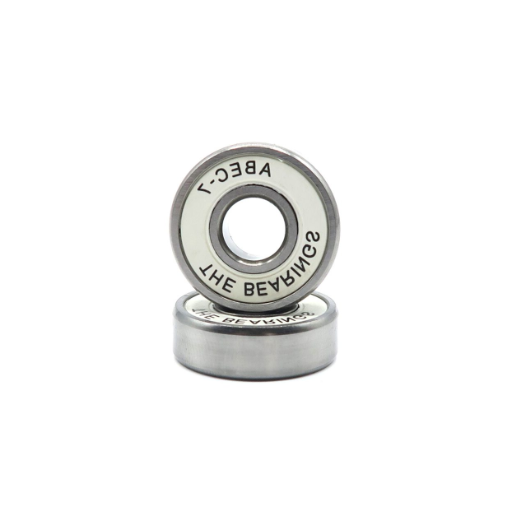
Differences Between ABEC-5 and ABEC-7 Bearings
ABEC-7 bearings have tighter tolerances, higher precision, and better performance at high speeds than one of the lesser neurotypes, ABEC-5, but both types have at times been over-specified for recreational uses such as skating.
|
Key Point |
ABEC-5 |
ABEC-7 |
|---|---|---|
|
Tolerance |
Moderate |
Tight |
|
Precision |
Standard |
High |
|
Speed |
Adequate |
Better |
|
Durability |
Good |
Better |
|
Cost |
Lower |
Higher |
|
Use Case |
General |
Precision |
|
Skating Fit |
Sufficient |
Overkill |
How ABEC-7 Stands Out
ABEC-7 bearings stand out because of their precise manufacturing and reserved smooth performance under almost stressful conditions. As an example, ABEC-7 level bearings, as opposed to ABEC-5 level bearings, are held to stricter tolerance regulations that nearly eliminate manufacturing imperfections. The smoother the rotation, the lesser the friction, and the higher the efficiency. This is especially true for high-speed applications where good accuracy and stability are paramount. Their ability to stay consistent through hard use also renders them more durable.
From a more practical point of view, ABEC-7 bearing selections cater to activities and purposes for whom low energy loses have paramount consideration and high reliability. For example, in high-level skating or in industrial machinery of a specialized type, tight tolerance requirements in ABEC-7 bearings reduce vibrational interference and transfer of momentum. This precise efficiency is just what it takes in situations where the very real benefit of a few miles per hour or fluidity coalesces with real-world measurable outcomes.
The fine precision all comes at a price. ABEC-7’s are not just more complicated to manufacture but, they also command much higher prices compared to ABEC-5. For the average day-to-day use just found in recreational skating, the features found in ABEC-7 will bring very little to the table above the less expensive ABEC-5 standard. To emphasize, outside environmental factors can also affect the performance of ABEC-7 bearings through contamination by dirt or water and through improper maintenance. Hence, their power can be fully harvested in controlled environments focused on performance; there, their merits come into play against the big bucks spent.
Frequently Asked Questions (FAQ)
Q: What are ABEC 7 bearings?
A: ABEC 7 bearings are high-precision bearings that are rated by the Annular Bearing Engineering Committee (ABEC). They offer a higher level of accuracy and performance compared to lower ratings, such as ABEC 5, making them ideal for applications that require smooth and fast operation.
Q: How do ABEC 7 bearings compare to ABEC 5 and ABEC 7?
A: The primary difference between ABEC 5 and ABEC 7 bearings lies in their precision and tolerances. ABEC 7 bearings have tighter tolerances and are manufactured to higher precision standards compared to ABEC 5 bearings, resulting in improved performance in high-speed applications.
Q: Should I choose ABEC 7 or ABEC 9 for my application?
A: The choice between ABEC 7 and ABEC 9 bearings depends on your specific needs. While ABEC 9 bearings offer even higher precision, ABEC 7 bearings are generally sufficient for most applications, providing excellent performance and durability at a more affordable price.
Q: What size options are available for ABEC 7 bearings?
A: ABEC 7 bearings come in a variety of sizes to accommodate different applications. It’s important to select the correct size to ensure optimal performance and compatibility with your equipment.
Q: What is included in a set of ABEC 7 bearings?
A: A set of ABEC 7 bearings typically includes multiple bearings designed for specific applications. The set may also contain additional components such as spacers and shields to enhance performance and longevity.
Q: Are 5 and ABEC 7 bearings interchangeable?
A: While 5 and ABEC 7 bearings can sometimes be used interchangeably, it is crucial to consider the performance requirements of your application. ABEC 7 bearings provide better precision, which may be necessary for high-speed or heavy-load applications.
Q: How do ABEC ratings affect the performance of bearings?
A: ABEC ratings indicate the precision and tolerance of the bearings. Higher ratings, like ABEC 7, signify tighter tolerances, resulting in reduced friction and greater efficiency, which is essential for applications requiring high speeds and reliability.
Q: What applications benefit from using ABEC 7 bearings?
A: ABEC 7 bearings are commonly used in high-performance applications such as skateboards, rollerblades, and machinery where precision and speed are critical. Their ability to maintain low friction and high durability makes them ideal for various demanding environments.
Q: How do I maintain my ABEC 7 bearings?
A: To maintain your ABEC 7 bearings, regularly clean them to remove dirt and debris, lubricate them appropriately, and inspect for wear and damage. Proper maintenance will extend the lifespan and performance of your bearing set.
UCTH213-40J-300 with Setscrew(inch)
CNSORDERNO: Normal-duty(2)
TOGN: UCTH213-40J-300
SDI: B-R1/8
SD: 2 1/2
UCTH212-39J-300 with Setscrew(inch)
CNSORDERNO: Normal-duty(2)
TOGN: UCTH212-39J-300
SDI: B-R1/8
SD: 2 7/16
UCTH212-38J-300 with Setscrew(inch)
CNSORDERNO: Normal-duty(2)
TOGN: UCTH212-38J-300
SDI: B-R1/8
SD: 2 3/8
UCTH212-36J-300 with Setscrew(inch)
CNSORDERNO: Normal-duty(2)
TOGN: UCTH212-36J-300
SDI: B-R1/8
SD: 2 1/4
UCTH211-35J-300 with Setscrew(inch)
CNSORDERNO: Normal-duty(2)
TOGN: UCTH211-35J-300
SDI: B-R1/8
SD: 2 3/16
UCTH211-34J-300 with Setscrew(inch)
CNSORDERNO: Normal-duty(2)
TOGN: UCTH211-34J-300
SDI: B-R1/8
SD: 2 1/8









